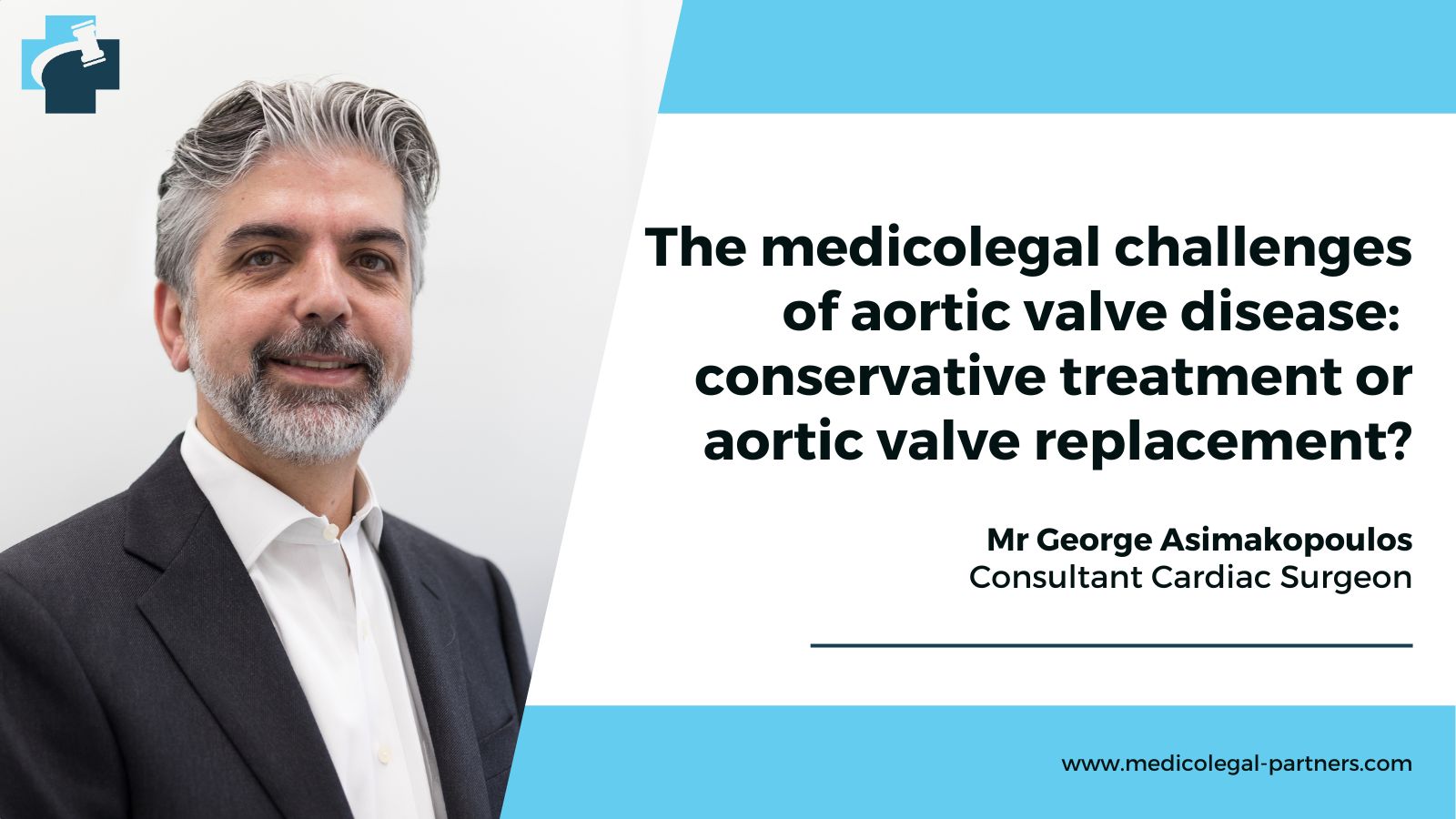The medicolegal challenges of aortic valve disease: Conservative treatment or aortic valve replacement?

Degeneration of the valves of the heart is very common, particularly in older patients. Aortic stenosis (AS), which is caused by calcification of a normal tricuspid valve or progressive stenosis of a congenitally bicuspid valve, is the most prevalent form of cardiovascular disease in Western countries. The severity of the stenosis progresses slowly over many years. However, the heart appears to compensate well in the early stages of the disease and there may be no discernible symptoms for decades. In contrast to children, sudden death in adults with no previous symptoms is rare even when the stenosis is severe. The slow deterioration of the affected valve is usually matched by progressive ventricular hypertrophy, a compensatory mechanism to normalise the stress on the left ventricular (LV) wall. Although this helps to preserve cardiac output, in many patients, this mechanism cannot be maintained indefinitely and eventually systolic function begins to decline. At this point, deterioration in the patient’s condition is usually rapid.
Another common form of aortic valve disease is aortic regurgitation (AR). This arises due to abnormalities of the valve leaflets or their supporting structures, which may be congenital or the result of various diseases. As with AS, LV hypertrophy develops, this time in response to the chronic volume overload, which progressively leads to dilatation and systolic dysfunction. Although patients may be asymptomatic for many years, over time, symptoms associated with heart failure may develop. The LV dysfunction associated with AR is initially reversible but may become permanent if myocardial contractile dysfunction develops.
Once aortic valve disease has been established, most patients are initially treated conservatively, through ‘watchful waiting’, but many are eventually offered surgical replacement of the defective valve. However, deciding whether to perform surgery, and the optimal timepoint at which to do so, remain challenging. Patients with asymptomatic AS or AR should be carefully monitored and any change in symptoms noted immediately. Where there are no concerns, an annual examination should be sufficient. However, patients with severe AS, defined as a peak aortic jet velocity of 4 m/s or more, and AR patients with substantial LV dilatation, require closer follow-up, consisting of 6-monthly clinical examinations and echocardiography every 6–12 months.
Findings on physical examination vary with the severity of valve calcification, the degree of stenosis and the level of LV function. However, monitoring of aortic valve disease has improved as new advanced imaging techniques have increased the accuracy of diagnosis and assessment of severity. The latter has also been assisted by the development of objective markers of disease progression. The prognosis of patients with severe asymptomatic AS is difficult to predict, but it is likely that symptoms will develop over the course of the next 3–5 years. In asymptomatic AR patients those with normal LV function generally have a good prognosis, while around one in four of those with LV dysfunction will develop symptoms each year.
Currently, there are no effective treatments available to delay the progression of AS. Although statin therapy has been suggested as a potential therapeutic candidate, to date the results of trials have not been encouraging. Likewise, the benefits of long-term vasodilator therapy in patients with severe AR are unclear, although they may be helpful in patients who are symptomatic or have LV dysfunction but are poor surgical candidates. Additionally, they may improve the haemodynamic profile of patients with severe heart failure before they undergo surgery.
As LV dysfunction often precedes any outward symptoms, the optimal timing of valve replacement is crucial, even in elderly patients. If performed early enough, functional deterioration can be prevented. There is also a reduced risk of subsequent myocardial infarction, stroke and hospitalisation for heart failure. Therefore, patients with significant aortic valve disease should be offered valve replacement surgery when symptoms such as dyspnoea, angina or syncope upon effort first appear. Life expectancy for such patients without surgery is only a few years and there is an increased risk of sudden death. Surgery should also be considered in older patients with AR and reduced LV function, even in the absence of symptoms. In the general population of patients with AR, the risk of sudden death is around 0.2% per year, but the mortality rate in patients age 50 years or older is much higher. This increase in risk must be taken into account when considering the timing of any proposed surgical intervention. The operative mortality risk associated with valve replacement in patients with severe aortic valve disease is relatively high, although it has reduced in recent years. Therefore, accurate assessment of AS grade and the severity of LV damage is critical so that patients are not subjected to unnecessary surgery. However, distinguishing between true severe AS and pseudosevere AS can be difficult.
Degenerative valve disease is common and likely to become more frequent as the population ages. In asymptomatic patients in the early stages of disease, the mortality risk is relatively low. However, it is still higher than in the general disease-free population. This fact, coupled with the inevitable progression of the disease, means that close monitoring of patients is vital and surgical intervention should be considered as soon as symptoms indicative of serious disease develop.
Further reading:
Banovic M, Putnik S, Penicka M, Doros G, Deja MA, Kockova R, et al. Aortic Valve Replacement Versus Conservative Treatment in Asymptomatic Severe Aortic Stenosis: The AVATAR Trial. Circulation. 2022 Mar;145(9):648-658.
Maganti K, Rigolin VH, Sarano ME, Bonow RO. Valvular heart disease: diagnosis and management. Mayo Clin Proc. 2010 May;85(5):483-500.

